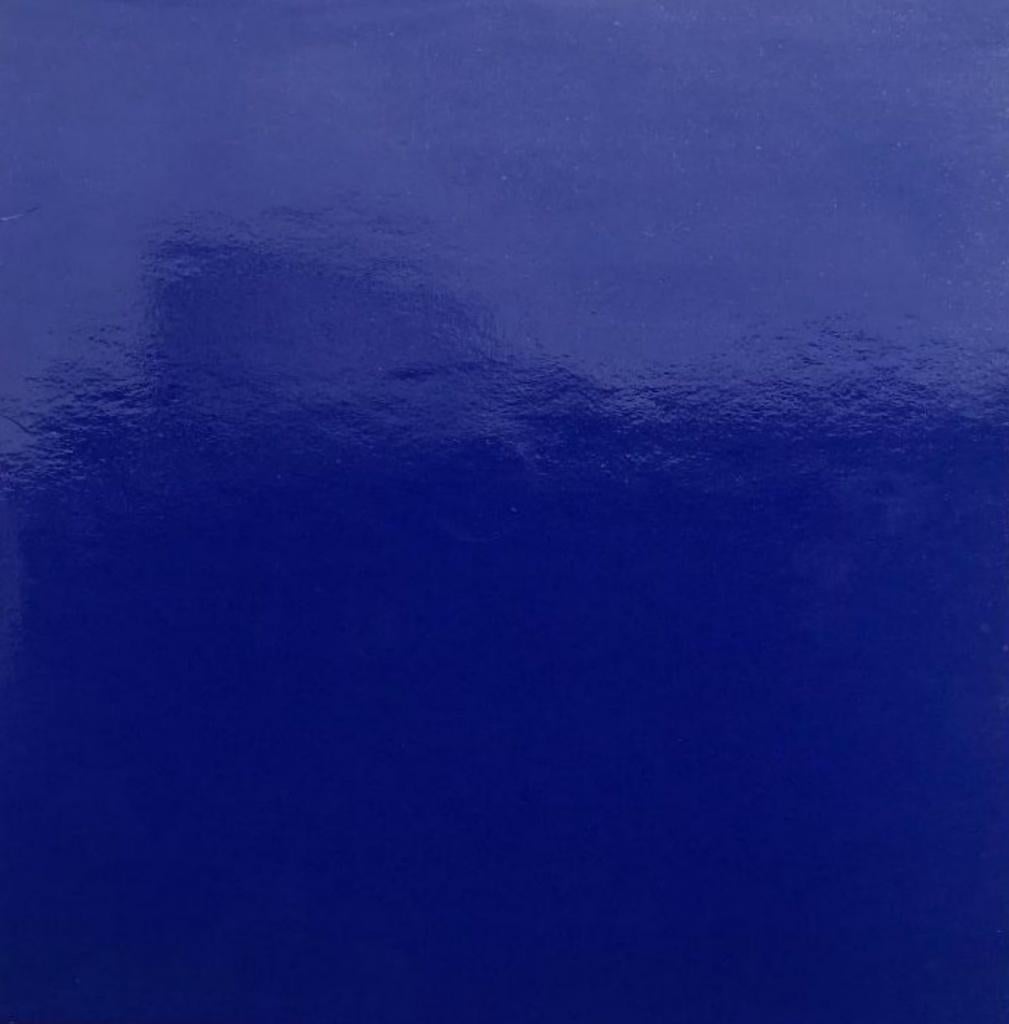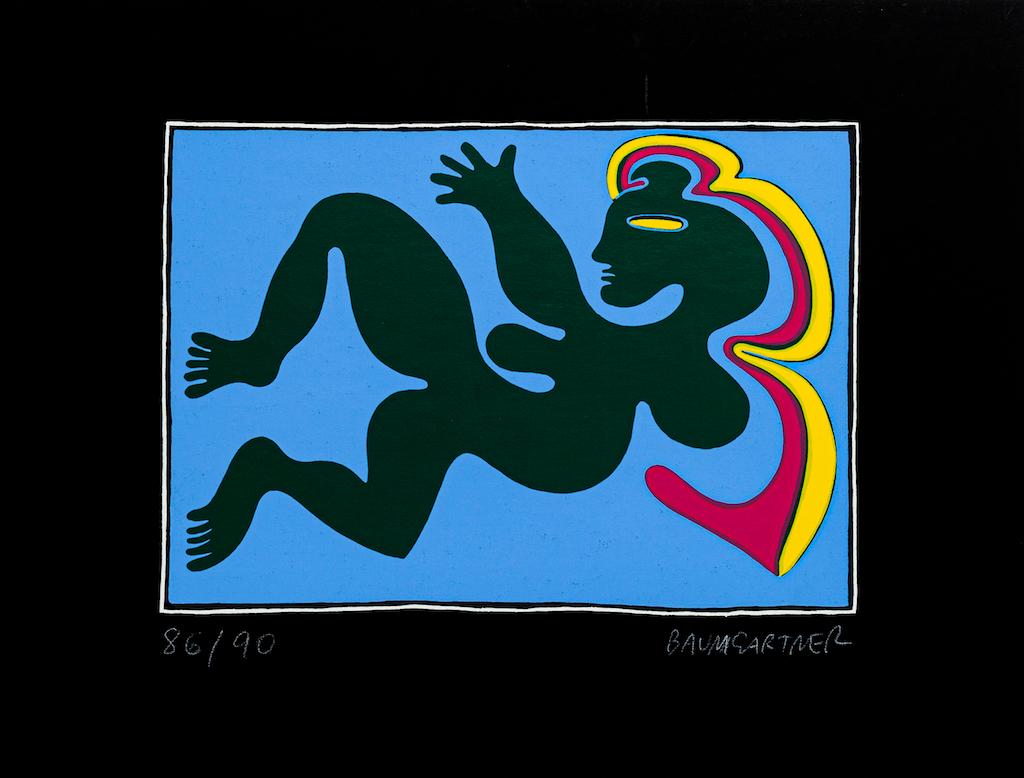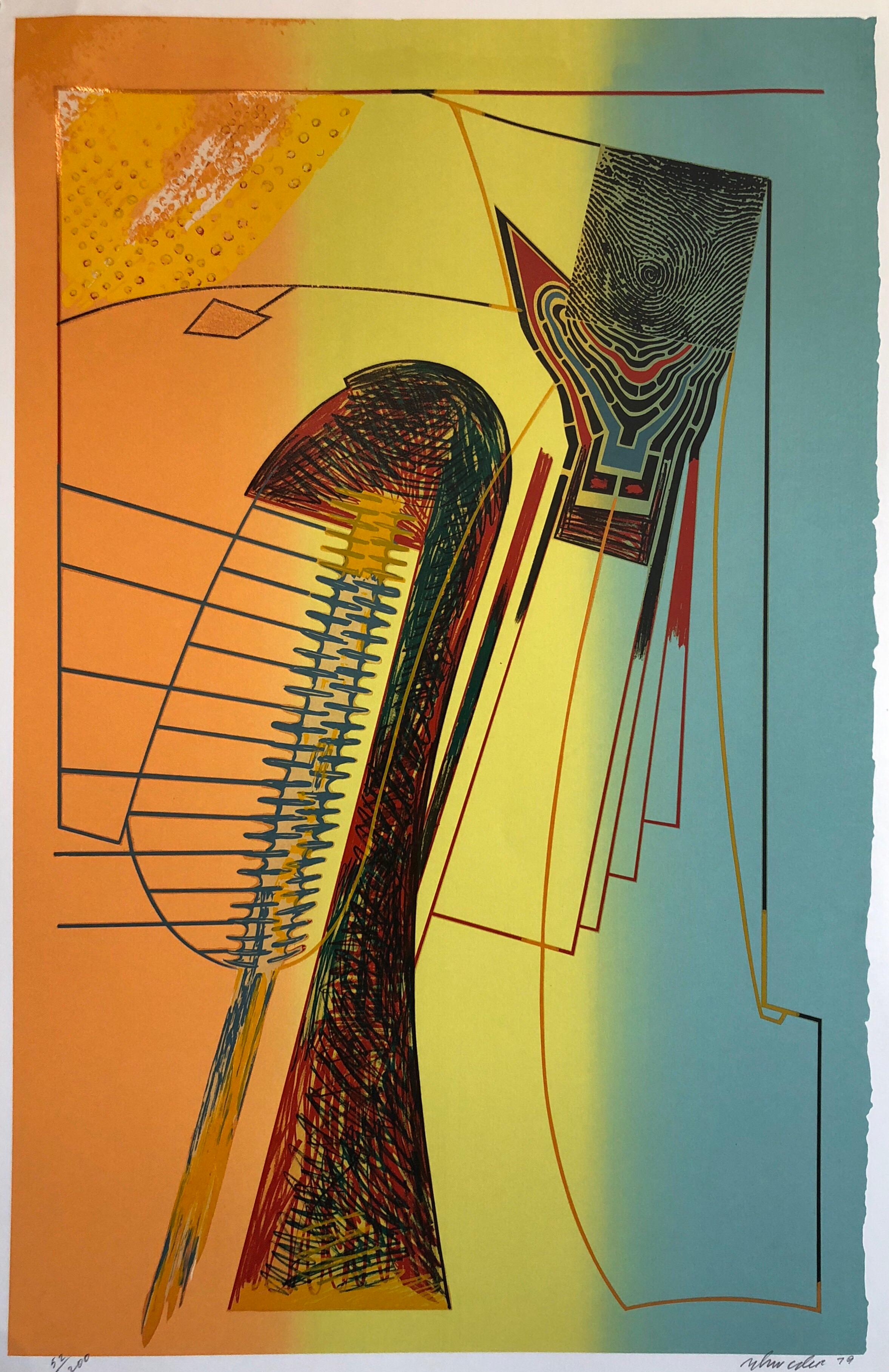Yaacov AgamAbstract Composition - Pyramid
About the Item
- Creator:Yaacov Agam (1928, Israeli)
- Dimensions:Height: 22.5 in (57.15 cm)Width: 24.5 in (62.23 cm)Depth: 1 in (2.54 cm)
- Medium:
- Movement & Style:
- Period:
- Condition:
- Gallery Location:Missouri, MO
- Reference Number:1stDibs: LU74735010801
Yaacov Agam
Influenced by his upbringing in Judaism as well as the teachings of the Bauhaus, Yaacov Agam is a pioneer of kinetic art as well as the Op art movement and is often credited with introducing geometric abstraction to his home country of Israel.
Born in Rishon LeZion, Palestine — now part of Israel — the son of a rabbi, Agam found that the spiritual world had a major influence on his art practice, as did the sand dunes he grew up watching as they constantly shifted with the wind. This perpetual movement would inform his work, whereby riveting, prismatic compositions that transform from different perspectives, patterns that generate optical effects and sculptures that move with a passing breeze all reflect the gradual changes in nature.
Agam studied with Israeli painter Mordecai Ardon at the Bezalel School of Art in Jerusalem in the 1940s before traveling to Zurich where he trained with Swiss Expressionist painter Johannes Itten and was inspired by the abstract work of Russian painter Wassily Kandinsky.
One of the innovative techniques Agam developed was the Agamograph, which uses lenticular printing so that multiple images, which are revealed as the viewer moves around the piece, can be seen on a single work. His art has regularly involved the spectator as a participant, whether it’s the 1972–74 room-size kinetic installation he created for the Elysée Palace that’s now in the Centre Pompidou in which a gleaming abstract sculpture is surrounded on all sides by polychromatic lines or it’s public art like the 1986 Fire and Water Fountain in Tel Aviv with circles of vibrant panels that offer varying colors from every angle.
In 2018, the Yaacov Agam Museum of Art opened in Rishon LeZion, showcasing six decades of Agam’s influential work that engages with perception through color, shape and form, from paintings, prints and installations to new experiments in interactive digital art.
Find a collection of Yaacov Agam art today on 1stDibs.
- ShippingRetrieving quote...Ships From: Missouri, MO
- Return PolicyA return for this item may be initiated within 2 days of delivery.
- Study/Falling Man (Series I)By Ernest Tino TrovaLocated in Missouri, MOStudy/Falling Man (Series I), 1967 By. Ernest Tino Trova (American, 1927-2009) 24 x 24 inches Wrapped on Foam Core Signed Artist Proof Lower Right Ernest Tino Trova (American, 1927-...Category
1960s American Modern Abstract Prints
MaterialsScreen
- Trova/Index, WavesBy Ernest Tino TrovaLocated in Missouri, MOTrova/Index, Waves, 1969 By. Ernest Tino Trova (American, 1927-2009) Signed in Pencil Lower Right Unframed: 10.5 x 7.5 inches With Frame: 15.25 x 11.75 inches Known for his Falling ...Category
20th Century American Modern Abstract Prints
MaterialsScreen
- Study/Falling Man (Series I)By Ernest Tino TrovaLocated in Missouri, MOStudy/Falling Man (Series I), 1967 By. Ernest Tino Trova (American, 1927-2009) Signed Lower Right in Pencil Screenprint, Available in Black or Silver Frame Unframed: 6 x 6 inches Wit...Category
20th Century American Modern Abstract Prints
MaterialsScreen
- Study/Falling Man (Series II)By Ernest Tino TrovaLocated in Missouri, MOStudy/Falling Man (Series II), 1967 By. Ernest Tino Trova (American, 1927-2009) 24 x 24 inches Wrapped on Foam core Signed Artist Proof Lower Right Ernest Tino Trova (American, 1927...Category
1960s American Modern Abstract Prints
MaterialsScreen
- Study/Falling Man (Series I)By Ernest Tino TrovaLocated in Missouri, MOStudy/Falling Man (Series I), 1967 By. Ernest Tino Trova (American, 1927-2009) 24 x 24 inches Wrapped to Foam Core Signed Artist Proof Lower Right Ernest Tino Trova (American, 1927-...Category
1960s American Modern Abstract Prints
MaterialsScreen
- Study/Falling Man (Series II)By Ernest Tino TrovaLocated in Missouri, MOStudy/Falling Man (Series II), 1967 By. Ernest Tino Trova (American, 1927-2009) 24 x 24 inches Signed Artist Proof Lower Right Wrapped to Foam Core Ernest Tino Trova (American, 1927...Category
1960s American Modern Abstract Prints
MaterialsScreen
- La Conférence à la Sorbonne, 3 Juin, 1959, Lt Ed Silkscreen cover record albumsBy Yves KleinLocated in New York, NYYves Klein La Conférence à la Sorbonne, 3 Juin, 1959, 1959-1963 Two 12-inch vinyl records held in gatefold sleeve with silkscreen cover jacket in IKB International Klein Blue...Category
1960s Modern Abstract Prints
MaterialsPlastic, Mixed Media, Screen, Offset, Pencil, Board, Lithograph
- Green Woman - Original Screen Print by Fritz Baumgartner - 1970By Fritz BaumgartnerLocated in Roma, ITGreen Woman is an original colored screen print artwork, realized in 1970 ca. by the Austrian artist Fritz Baumgartner. Hand-Signed on lower right margin,...Category
1970s Modern Abstract Prints
MaterialsPaper, Screen
- In the Blur of Numbers - Handsigned Screen PrintBy Cozette de CharmoyLocated in Paris, FRCozette de CHARMOY (1939-) In the Blur of Numbers Screen Print Handsigned in pencil Limited to 75 copies and a few EA (here an EA proof) On Arches vellum 88 x 60 cm (c. 35 x 24 inch...Category
1990s Modern Abstract Prints
MaterialsScreen
- Prefatio, from the Graphic Tectonics SeriesBy Josef AlbersLocated in New York, NYEdition: 34. This impression is one of only two proofs printed on graph paper. Printed by Reinhard Schumann, Hickory, North Carolina. Reproduced in Formulation: Articulation (portfol...Category
20th Century American Modern Abstract Prints
MaterialsScreen
- Large Johnny Friedlaender Poster Print No TextBy Johnny FriedlaenderLocated in Surfside, FLJohnny Friedlaender (26 December 1912 – 18 June 1992) was a leading 20th-century artist, whose works have been exhibited in Germany, France, Netherlands, Italy, Japan and the United States. He has been influential upon other notable artists, who were students in his Paris gallery. His preferred medium of aquatint etching is a technically difficult artistic process, of which Friedlaender has been a pioneer. Gotthard Johnny Friedlaender was born in Pless (Pszczyna), Prussian Silesia, as the son of a pharmacist. He was graduated from the Breslau (Wrocław) high school in 1922 and then attended the Academy of Arts (Akademie der Bildenden Kunste) in Breslau, where he studied under Otto Mueller. He graduated from the Academy as a master student in 1928. In 1930 he moved to Dresden where he held exhibitions at the J. Sandel Gallery and at the Dresden Art Museum. He was in Berlin for part of 1933, and then journeyed to Paris. After two years in a Nazi concentration camp, he emigrated to Czechoslovakia, where he settled in Ostrava, where he held the first one-man show of his etchings. In 1936 Friedlaender journeyed to Czechoslovakia, Switzerland, Austria, France and Belgium. At the Hague he held a successful exhibition of etchings and watercolours. He fled to Paris in 1937 as a political refugee of the Nazi regime with his young wife, who was an actress. In that year he held an exhibition of his etchings which included the works: L ‘Equipe and Matieres et Formes. From 1939 to 1943 he was interned in a series of concentration camps, but survived against poor odds. After freedom in 1944 Friedlaender began a series of twelve etchings entitled Images du Malheur with Sagile as his publisher. In the same year he received a commission to illustrate four books by Freres Tharaud of the French Academy. In 1945 he performed work for several newspapers including Cavalcade and Carrefour. In the year 1947 he produced the work Reves Cosmiques and in that same year he became a member of the Salon de Mai, which position he held until 1969. In the year 1948 he began a friendship with the painter Nicolas de Staël and held his first exhibition in Copenhagen at Galerie Birch. The following year he showed for the first time in Galerie La Hune in Paris. After living in Paris for 13 years, Friedlaender became a French citizen in 1950. Friedlaender expanded his geographic scope in 1951 and exhibited in Tokyo in a modern art show. In the same year he was a participant in the XI Trienale in Milan, Italy. By 1953 he had produced works for a one-man show at the Museum of Neuchâtel and exhibited at the Galerie Moers in Amsterdam, the II Camino Gallery in Rome, in São Paulo, Brazil and in Paris. He was a participant of the French Italian Art Conference in Turin, Italy that same year. Friedlaender accepted an international art award in 1957, becoming the recipient of the Biennial Kakamura Prize in Tokyo. In 1959 he received a teaching post awarded by UNESCO at the Museum of Modern Art in Rio de Janeiro. By 1968 Friedlaender was travelling to Puerto Rico, New York City and Washington, D.C. to hold exhibitions. That year he also purchased a home in the Burgundy region of France. 1971 was another year of diverse international travel including shows in Bern, Milan, Paris, Krefeld and again New York. In the latter city he exhibited paintings at the Far Gallery, a venue becoming well known for its patronage of important twentieth-century artists. From his atelier in Paris Friedlaender instructed younger artists who themselves went on to become noteworthy, among them Arthur Luiz Piza, Brigitte Coudrain...Category
Mid-20th Century Modern Abstract Prints
MaterialsOffset, Screen
- Surrealist Architectural Landscape "Fall for it" 1970s Chicago ModernistBy William SchwedlerLocated in Surfside, FLThis serigraph has never been framed. Chicago born Modernist. Showed at Andrew Crispo Gallery and Tibor de Nagy Gallery. Schwedler could not help but be influenced by the local artistic milieu particularly with those contemporaries and friends who formed the Hairy Who in the Mid - 1960's Schwedler's Paintings from the beginning to his young end were ripe with a surreal, abstract poetry filled with references to landscapes, architecture, texture (cracked), line (broken,chopped, and Pulled to pieces), and delicate, but voluptuous color. Studying at the Art institute of Chicago with his friends Cynthia Carlson, Jim Nutt...Category
1970s American Modern Abstract Prints
MaterialsScreen





